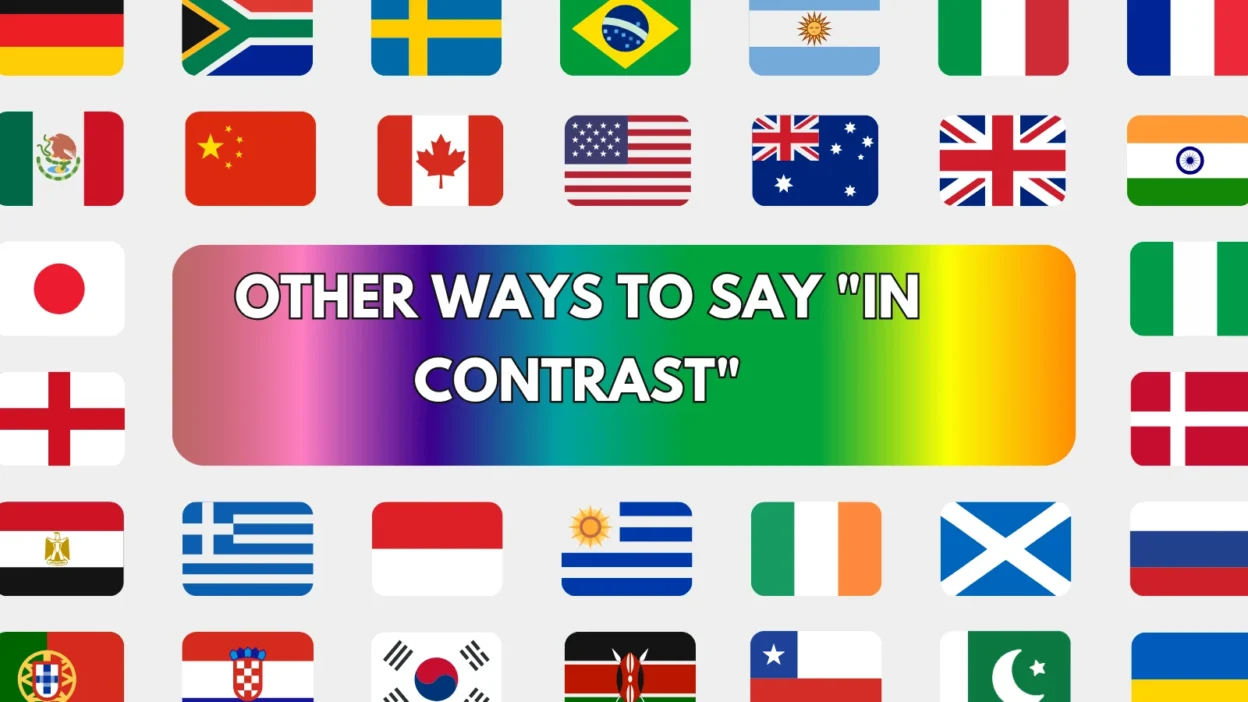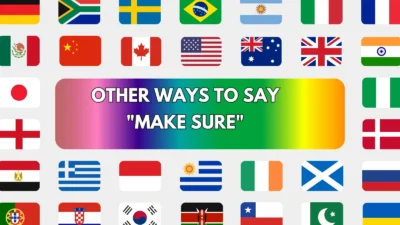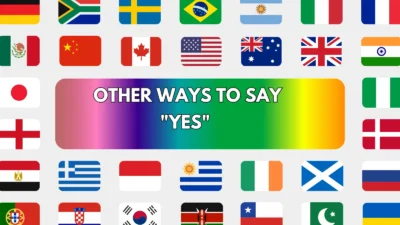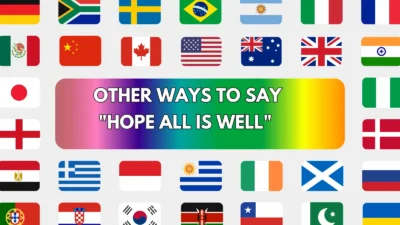The phrase “in contrast” is often used to show a clear difference between two ideas, situations, or outcomes. It’s great for comparing opposing perspectives or highlighting distinctions. However, using it too frequently can make your writing sound repetitive.
To keep your language sharp and varied, you can explore different expressions that communicate the same meaning — each with its own tone and purpose. Below are 25 effective alternatives to “in contrast” that will elevate your writing and give you more stylistic flexibility.
1. On the Other Hand
Meaning:
Presents an opposing viewpoint or alternative perspective.
Detailed Explanation:
This phrase is often used to introduce a second idea that differs from the first. It flows well in both spoken and written English.
Scenario Example:
The product is expensive. On the other hand, it offers premium features.
Best Use:
Balanced arguments, essays, presentations.
Tone:
Neutral, conversational, comparative.
2. Conversely
Meaning:
Introduces the opposite or reverse of what has just been said.
Detailed Explanation:
This is a formal alternative that works well in academic and technical writing.
Scenario Example:
Some employees thrive in remote settings. Conversely, others feel disconnected.
Best Use:
Essays, research papers, business analysis.
Tone:
Formal, logical, clear.
3. However
Meaning:
Shows contrast or contradiction with the previous point.
Detailed Explanation:
Though not always a direct replacement, “however” can smoothly highlight a differing idea, especially within a sentence.
Scenario Example:
The team worked overtime. However, the project was still delayed.
Best Use:
Essays, reports, formal writing.
Tone:
Professional, objective, polished.
4. By Comparison
Meaning:
Used to highlight differences when examining two or more things.
Detailed Explanation:
It focuses on how one item differs from another by directly comparing them.
Scenario Example:
The first option is costly. By comparison, the second is more affordable.
Best Use:
Product reviews, analyses, persuasive writing.
Tone:
Analytical, balanced, informative.
5. In Opposition
Meaning:
Highlights a directly opposing view or idea.
Detailed Explanation:
Stronger than “in contrast,” often used in debates or argumentative writing.
Scenario Example:
In opposition to the previous findings, the new study presents different data.
Best Use:
Debates, opinion pieces, persuasive essays.
Tone:
Formal, strong, assertive.
6. Inversely
Meaning:
Describes a situation where one variable moves in the opposite direction of another.
Detailed Explanation:
Best used in data analysis, scientific studies, or mathematical contexts.
Scenario Example:
Inversely, as supply increases, demand tends to decrease.
Best Use:
Scientific writing, statistics, economics.
Tone:
Technical, precise, analytical.
7. Instead
Meaning:
Replaces one thing with another in a contrasting way.
Detailed Explanation:
Often used to indicate a different or opposite course of action or result.
Scenario Example:
He didn’t answer directly. Instead, he changed the topic.
Best Use:
Casual or formal writing, depending on tone.
Tone:
Flexible, clear, neutral.
8. Rather Than
Meaning:
Introduces a preference or contrast between two ideas.
Detailed Explanation:
Works well when comparing options or choices.
Scenario Example:
Rather than outsourcing, the company chose to hire in-house talent.
Best Use:
Decision-making contexts, business discussions.
Tone:
Decisive, thoughtful, formal or casual.
9. Yet
Meaning:
Shows an unexpected contrast or opposing outcome.
Detailed Explanation:
Very common in storytelling, adds a natural and smooth transition.
Scenario Example:
He’s highly qualified, yet he struggles with leadership.
Best Use:
Narratives, creative writing, reports.
Tone:
Conversational, expressive, balanced.
10. Still
Meaning:
Indicates a contrast that persists despite previous statements.
Detailed Explanation:
Smooth and softens the transition between contrasting thoughts.
Scenario Example:
The weather was harsh. Still, the hikers continued.
Best Use:
Reflective writing, personal stories, casual content.
Tone:
Gentle, conversational, thoughtful.
11. Albeit
Meaning:
Although or even though — used within a sentence to contrast subtly.
Detailed Explanation:
More compact than “in contrast,” adds sophistication to comparisons.
Scenario Example:
The plan was successful, albeit delayed.
Best Use:
Essays, articles, formal writing.
Tone:
Elegant, formal, subtle.
12. Nevertheless
Meaning:
Shows that something happens despite a previous obstacle or condition.
Detailed Explanation:
It creates a strong contrast while keeping the flow professional.
Scenario Example:
The proposal was risky. Nevertheless, it was approved.
Best Use:
Persuasive writing, project reports.
Tone:
Assertive, refined, professional.
13. Whereas
Meaning:
Highlights a clear difference between two elements or groups.
Detailed Explanation:
Often used in legal, academic, or formal writing.
Scenario Example:
She prefers structured routines, whereas he thrives on spontaneity.
Best Use:
Contracts, comparisons, logical writing.
Tone:
Neutral, analytical, structured.
14. Differently
Meaning:
Indicates that something is done or exists in another way.
Detailed Explanation:
Focuses on how approaches or perspectives vary.
Scenario Example:
The two managers handled the situation differently.
Best Use:
HR reports, management analysis.
Tone:
Neutral, factual, descriptive.
15. Alternatively
Meaning:
Introduces another possibility or choice.
Detailed Explanation:
While not always contrasting, it works well to suggest a different view or solution.
Scenario Example:
Alternatively, we could delay the launch until Q4.
Best Use:
Strategy discussions, emails, planning.
Tone:
Professional, solution-focused.
16. Though
Meaning:
Used to express a slight contrast within a single sentence.
Detailed Explanation:
Flexible and casual; often placed at the end of a sentence.
Scenario Example:
The service is fast. It’s expensive, though.
Best Use:
Informal writing, messaging, blogs.
Tone:
Conversational, light, flexible.
17. Even So
Meaning:
Shows a result that occurs despite what was previously said.
Detailed Explanation:
Gives contrast while keeping a smooth, thoughtful tone.
Scenario Example:
He had no prior experience. Even so, he excelled quickly.
Best Use:
Emails, case studies, storytelling.
Tone:
Warm, gentle, reflective.
18. That Said
Meaning:
Acknowledges a point, then introduces a contrast respectfully.
Detailed Explanation:
Useful when you want to soften a disagreement or pivot in tone.
Scenario Example:
The proposal has potential. That said, the budget needs review.
Best Use:
Balanced discussions, feedback, presentations.
Tone:
Respectful, professional, diplomatic.
19. In Spite of That
Meaning:
Despite the situation or facts just mentioned.
Detailed Explanation:
Adds a sense of resilience or contradiction.
Scenario Example:
In spite of that setback, the project moved forward.
Best Use:
Motivational pieces, case studies.
Tone:
Encouraging, assertive, honest.
20. Instead of That
Meaning:
Presents a different direction or option in response to a condition.
Detailed Explanation:
A direct contrast, usually involving an action or choice.
Scenario Example:
Instead of that plan, we chose a simpler solution.
Best Use:
Emails, decision-making content.
Tone:
Clear, direct, neutral.
21. Despite That
Meaning:
Reinforces that something occurred contrary to expectations.
Detailed Explanation:
A softer, smoother contrast than “in contrast.”
Scenario Example:
Despite that delay, the event was a success.
Best Use:
Narrative reports, reflective writing.
Tone:
Professional, calm, optimistic.
22. Otherwise
Meaning:
Presents an alternative scenario or consequence.
Detailed Explanation:
Often used when warning of or suggesting a different result.
Scenario Example:
Act quickly. Otherwise, we risk losing the deal.
Best Use:
Instructions, action items, guides.
Tone:
Serious, instructive, concise.
23. Rather
Meaning:
Used to correct or modify a previous idea.
Detailed Explanation:
Adds elegance and clarity to comparison writing.
Scenario Example:
It wasn’t laziness, rather, a lack of motivation.
Best Use:
Essays, narratives, analytical writing.
Tone:
Refined, intellectual, clear.
24. A Different Approach
Meaning:
Indicates another method or perspective.
Detailed Explanation:
Not a direct conjunction, but great for showing comparison in structure.
Scenario Example:
Let’s consider a different approach that simplifies the workflow.
Best Use:
Team discussions, strategy sessions.
Tone:
Strategic, constructive, open.
25. On the Flip Side
Meaning:
A playful or casual way to show the other side of an issue.
Detailed Explanation:
Good for informal writing or when aiming for a lighter tone.
Scenario Example:
It saves time. On the flip side, it costs more.
Best Use:
Blog posts, social media, internal messaging.
Tone:
Casual, humorous, modern.
Conclusion
The phrase “in contrast” is a reliable tool for highlighting differences, but you now have 25 powerful alternatives to keep your writing fresh and impactful. Whether you’re writing formally, casually, or creatively, these options help you communicate contrast more precisely and with better flow.




